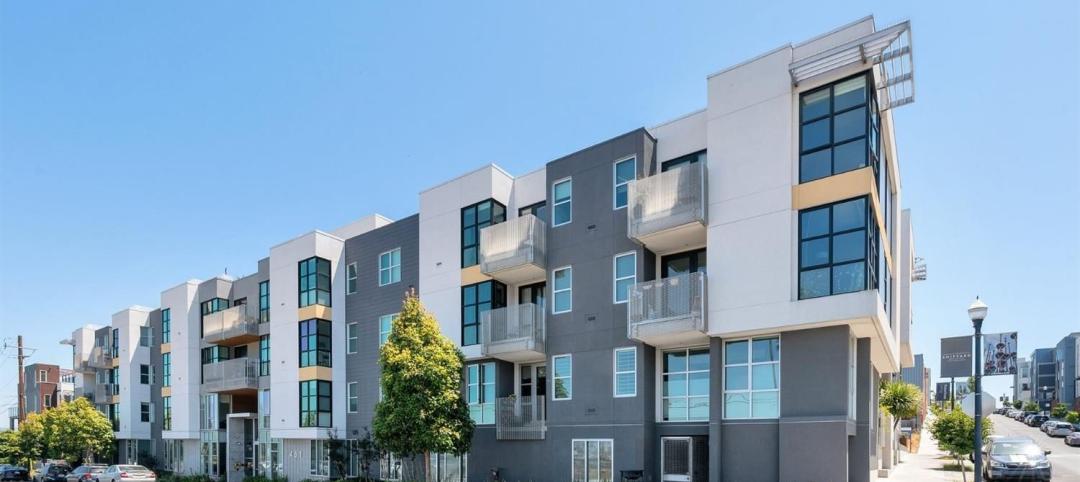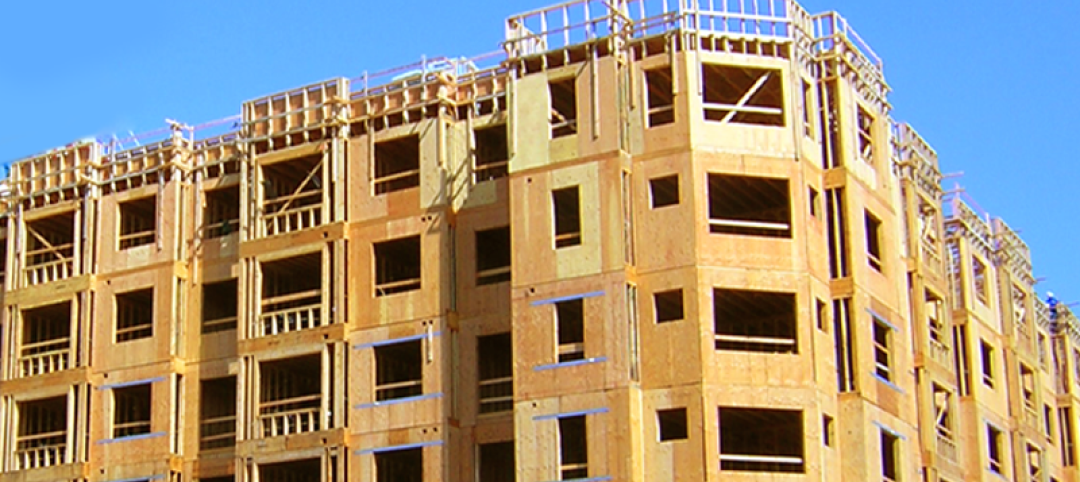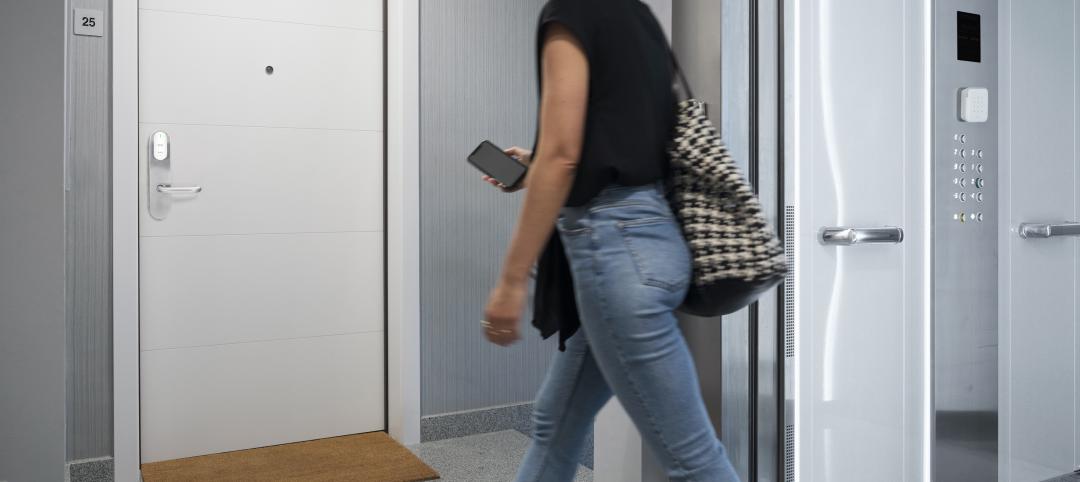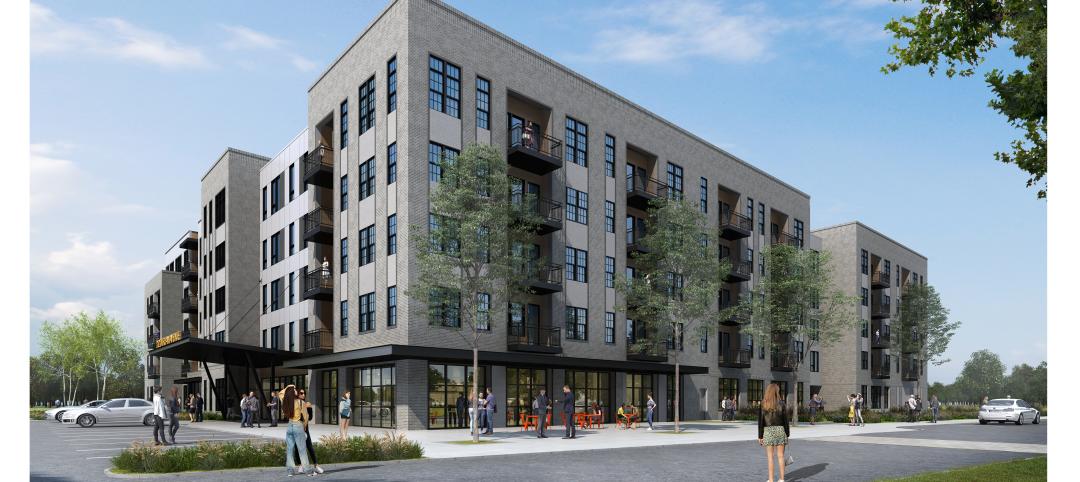A project to convert an underperforming mid-century office tower in Long Beach, Calif., created badly needed market rate housing with a significantly lowered carbon footprint. The adaptive reuse project, composed of 203,177 sf including parking, created 106 apartment units out of a Class B office building that had been vacant for about 10 years.
The $44 million 200 West Ocean project repurposed existing steel and concrete instead of trashing them, resulting in a 69% reduction in embodied carbon, an estimated 3.19 million Kg of CO2, and prevented some 26 million pounds of material from entering the waste stream.
The design included cutting slots into existing concrete to double the size of all windows, increasing natural daylight, and maximizing views for residents. This transformed an otherwise dark, insular, and flat concrete facade into an inviting, articulated building, producing a more appealing connection between the city fabric and residents.
The massing and floor plans of the building were altered to carve out balconies and outdoor terraces from the façade. More than 75% of the units have substantial natural ventilation and direct outdoor patios, allowing residents to benefit from cool ocean breezes. Recessed patios on the south side of the building reduce heat gain and maximize ocean views.

Strengthening part of the parking structure roof enabled design firm Studio One Eleven to add a community room, pool, spa, and barbecue area. Outdated mechanical equipment was removed from the roof of the main building, allowing transformation of the rooftop space into eight two-story penthouse townhomes.
The rooftop stretches beyond the glass facade of the top two stories and is lit from below at night. Interior atriums were included in the four inbound penthouse units. By creating an opening in the rooftop, bedrooms without direct windows could have natural light and ventilation as well as dramatic views through the double-height living room beyond.
Residents have just a five-minute walk to public transit that connects to downtown Los Angeles. The front sidewalk connects directly to the Pike, a promenade of dining, retail, and the Long Beach Convention Center.
On the project team:
Developer: Greystar
Design architect: Studio One Eleven
Architect of record: Studio One Eleven
MEP engineer: Donald Dickerson Assoc.
Structural engineer: Labib Funk and Assoc.
Civil engineer: KPFF
Landscape Architect: Mark Tessier Landscape
Construction Manager: JR van Dijs
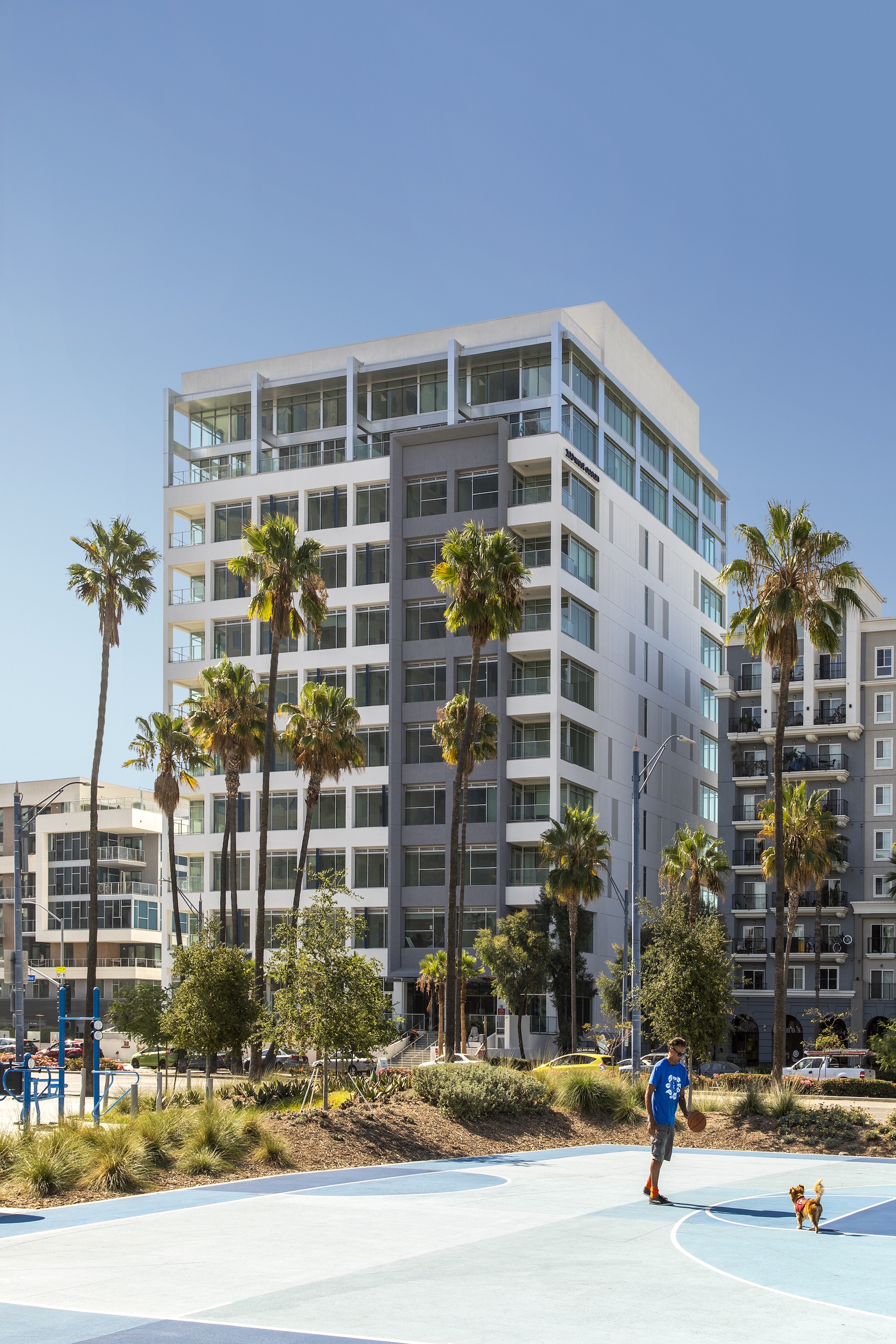
Design essay from architect Studio One Eleven
Here are more details on the project from architect Studio One Eleven:
Originally designed by AC Martin and Associates in 1967, this Class B building was commissioned by the General Telephone Company of California, the largest independent telephone company in the United States during the days of the Bell System, to serve as the headquarters for the southern region. Studio One Eleven was commissioned to repurpose this oceanview building as market rate housing.
Studio One Eleven’s design pays homage to the building’s mid century architectural history and introduces renewed vibrancy with contemporary touches. The original building felt insular with an impenetrable facade and dark windows, so the renovation sought to reverse this relationship with the urban fabric and to invite views and connectivity. The addition of a gray vertical frame over the entry accentuates the building’s presence on Ocean Boulevard. To capitalize on the views and to allow more natural lighting, Studio One Eleven doubled all existing windows in size and cut slots in the concrete bulkhead to make them larger. The outdated rooftop mechanical equipment was removed and two new stories were added to give the building an iconic appearance, furthering the identity of 200 Ocean within a burgeoning downtown.
By drastically changing the floor plans and changing the massing of the building, carving outdoor balconies and terraces from the facade of the building, Studio One Eleven was able to create voluminous, varied, and light-filled units that each have access to the outdoors. The new residential units will have exposed concrete walls in the corridors, tall ceilings and many with balconies with either ocean or city views. Overall, lower units feel connected to the street while upper units are connected to views.

Utilizing the tall ground floor that was originally designed for retail, Studio One Eleven created double height lofts with mezzanines and floor to ceiling windows. On the top floors, inbound townhome units feature interior atriums, created by carving openings in the roof and allowing for interior bedrooms to have direct access to natural light and ventilation. Above the fourth floor, residents have unobstructed views southward over the waterfront, Queen Mary, and Catalina Island beyond, and northward towards downtown Los Angeles and San Gabriel Mountain range beyond. By strengthening part of the parking structure roof, Studio One Eleven was able to add an expansive ground floor amenity deck that features a pool deck and spa, community rooms, and a barbecue area for residents.
Minimizing the overall quantity of material used in a building, especially high-embodied-carbon materials such as concrete, steel, and petrochemical-based insulation products, can significantly reduce the overall embodied carbon of a project. By re-using the existing building for a new purpose, the project results in 69% lowered embodied carbon and 3.19M Kg CO2e emissions avoided, as well as over 26M lbs diverted from the waste stream.








Related Stories
Multifamily Housing | May 23, 2023
One out of three office buildings in largest U.S. cities are suitable for residential conversion
Roughly one in three office buildings in the largest U.S. cities are well suited to be converted to multifamily residential properties, according to a study by global real estate firm Avison Young. Some 6,206 buildings across 10 U.S. cities present viable opportunities for conversion to residential use.
Multifamily Housing | May 19, 2023
Biden administration beefs up energy efficiency standards on new federally funded housing
The Biden Administration recently moved to require more stringent energy efficiency standards on federally funded housing projects. Developers building homes with taxpayer funds will have to construct to the International Energy Conservation Code (IECC) 2021 for low-density housing and American Society of Heating, Refrigerating and Air-Conditioning Engineers ASHRAE 90.1 for multi-family projects.
Sponsored | Multifamily Housing | May 19, 2023
Shear Wall Selection for Wood-Framed Buildings
From wall bracing to FTAO, there are many ways to secure the walls of a building. Learn how to evaluate which method is best for a project.
Sponsored | Multifamily Housing | May 17, 2023
The Key To Multifamily Access Control — Consistent Resident Experiences
Explore the challenges of multifamily access control and discover the key to consistent user experiences with a resident-first approach and open platforms.
Affordable Housing | May 17, 2023
Affordable housing advocates push for community-owned homes over investment properties
Panelists participating in a recent webinar hosted by the Urban Institute discussed various actions that could help alleviate the nation’s affordable housing crisis. Among the possible remedies: inclusionary zoning policies, various reforms to increase local affordable housing stock, and fees on new development to offset the impact on public infrastructure.
Multifamily Housing | May 16, 2023
Legislators aim to make office-to-housing conversions easier
Lawmakers around the country are looking for ways to spur conversions of office space to residential use.cSuch projects come with challenges such as inadequate plumbing, not enough exterior-facing windows, and footprints that don’t easily lend themselves to residential use. These conditions raise the cost for developers.
Multifamily Housing | May 12, 2023
An industrial ‘eyesore’ is getting new life as an apartment complex
The project, in Metuchen, N.J., includes significant improvements to a nearby wildlife preserve.
Senior Living Design | May 8, 2023
Seattle senior living community aims to be world’s first to achieve Living Building Challenge designation
Aegis Living Lake Union in Seattle is the world’s first assisted living community designed to meet the rigorous Living Building Challenge certification. Completed in 2022, the Ankrom Moisan-designed, 70,000 sf-building is fully electrified. All commercial dryers, domestic hot water, and kitchen equipment are powered by electricity in lieu of gas, which reduces the facility’s carbon footprint.
Multifamily Housing | May 8, 2023
The average multifamily rent was $1,709 in April 2023, up for the second straight month
Despite economic headwinds, the multifamily housing market continues to demonstrate resilience, according to a new Yardi Matrix report.




